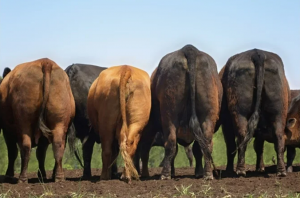The vegan diet: ethos, impacts, and recommendations

For a variety of reasons, including environmental and health considerations, cutting out meat from one’s diet has grown in popularity.
Avoiding animal products like meat, eggs, and dairy is a hallmark of vegan diets. Nutritional and health factors specific to a vegan diet must be taken into account.
The vegan ethics
Younger individuals, especially women, are particularly fond of the vegan diet. 1.4% of Americans identified as vegan in 2006; 3.4% did so in 2015.
The main tenet of veganism is to abstain from eating animal products for a variety of reasons, including environmental considerations, moral objections to the way farm animals are treated, the use of drugs like growth hormones on farm animals, and health benefits.
Vegans can make a number of decisions, many of which are influenced by their motivation for going vegan, even though the core plant-based principles of veganism remain valid.
The most extreme are individuals who consume uncooked vegan food such seeds, veggies, and nuts, sometimes known as “living food.”
It might be difficult to research how veganism affects health because there are so many possible differences in what it means to be a vegan.

Veganism’s effects
Health and environmental effects have received the majority of attention in studies on the effects of vegan diets.
Vegan diets are linked to a variety of health benefits, including being slimmer, having lower cholesterol and blood pressure, according to health research. This is mostly related to manipulation of the gut flora and dietary consumption. However, there aren’t any extensive studies showing how successful the diet is in real life and separating its effects from those of other factors.
A proven correct estimate for the environmental cost of eating beef can be difficult to determine, too.
Food can be a significant source of greenhouse gas emissions during production, transit, storage, cooking, and disposal, according to several worldwide partnerships.
The reasons include the wasteful use of land for grazing animals and for the food necessary to feed livestock, as well as the methane that livestock release.
According to studies comparing meat eaters to vegans and vegetarians, meat eaters have a carbon footprint that is more than twice as large as that of vegans.
The predicted daily greenhouse gas emissions for meat eaters are 7.19 kgCO2e, compared to 2.89 kgCO2e for vegans. In light of this, there is some evidence that vegan diets can be successful for those who change their diet for environmental reasons.
Vegetarian suggestions
There are some general dietary guidelines for vegans because a lot of frequently eaten elements from meat and dairy are excluded from a vegan diet. These can come from natural sources, fortified foods, or supplement pills.
What Takes Place to the Body During Dieting?
It is recommended to take supplements of the vitamins B-12 and D. Foods like fortified soy drinks and nutritional yeast can be supplemented with B-12 to enable vegans to include the vitamin in their daily diet. Some breakfast cereals contain vitamin B-12 naturally as well. Orange juice, for example, contains vitamin D.
Calcium and zinc are two other vital elements that are typically deficient in vegan diets. While many essential vegan meals, such leafy green vegetables and tofu, include calcium, it normally needs to be supplemented with calcium-fortified foods, like fruit juices.
What is Healthy Skin?
Many vegan mainstays, such grains and legumes, are rich in zinc, but vegans need be careful to eat enough of these to counteract the traditional vegan diet’s high phytate intake.
Fish is a typical source of good fats, like omega-3, which vegan diets frequently lack.
The consumption of foods high in n-3 fatty acids, such as walnuts and soy products, as well as n-3 fatty acids, such as soy milk and cereal bars, is advised for vegans. This is crucial for women who are expecting or nursing since they might want to take additional supplements of long-chain n-3 fatty acids.





